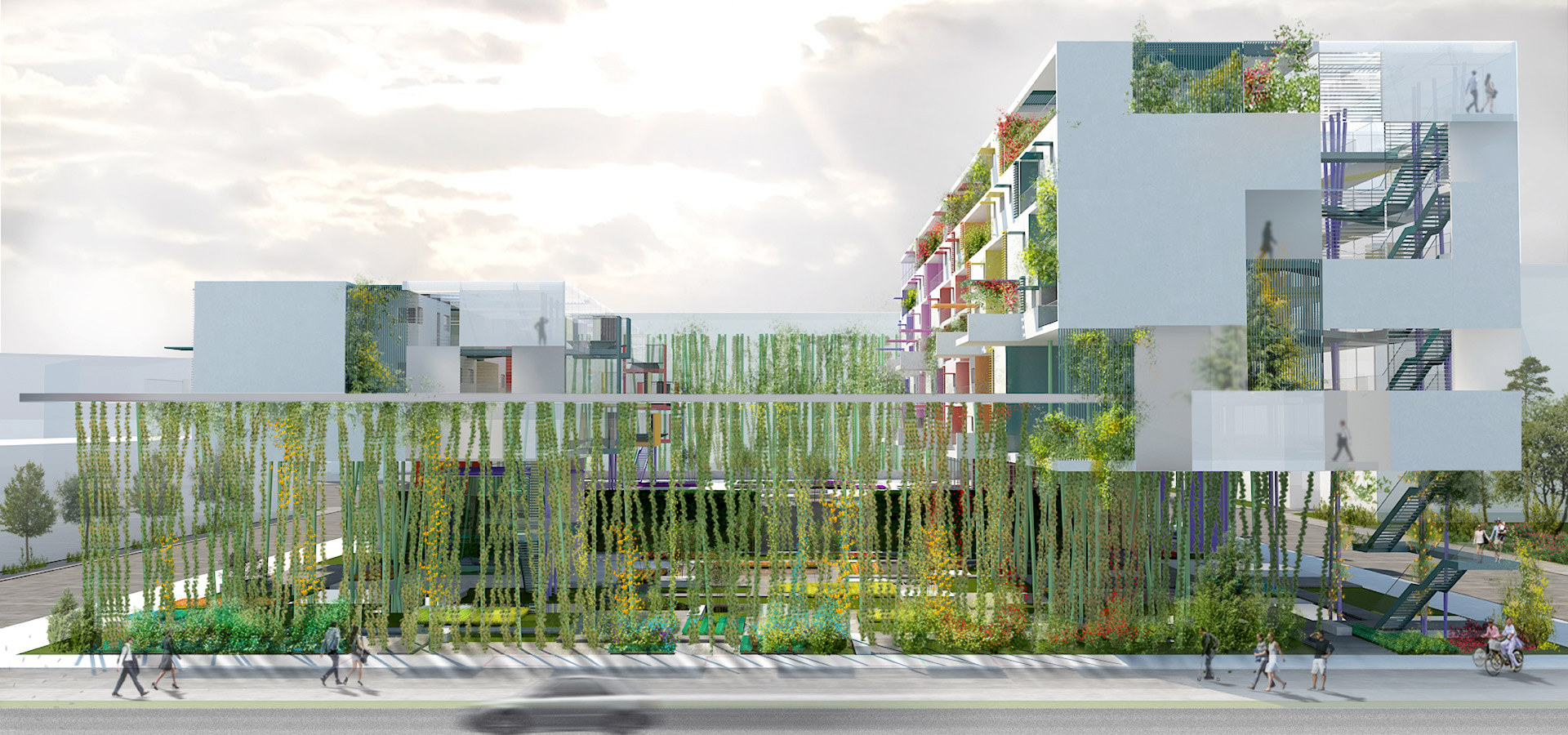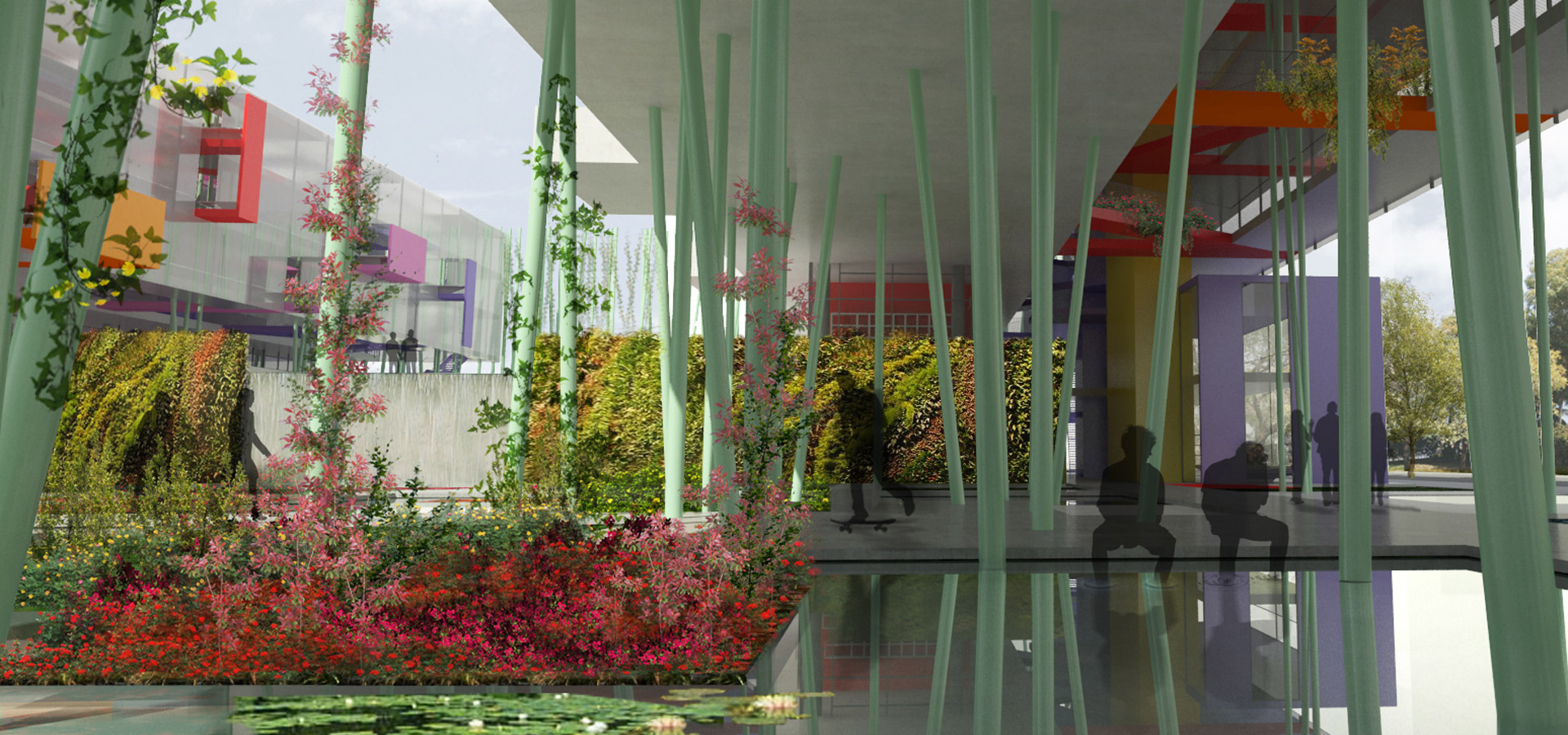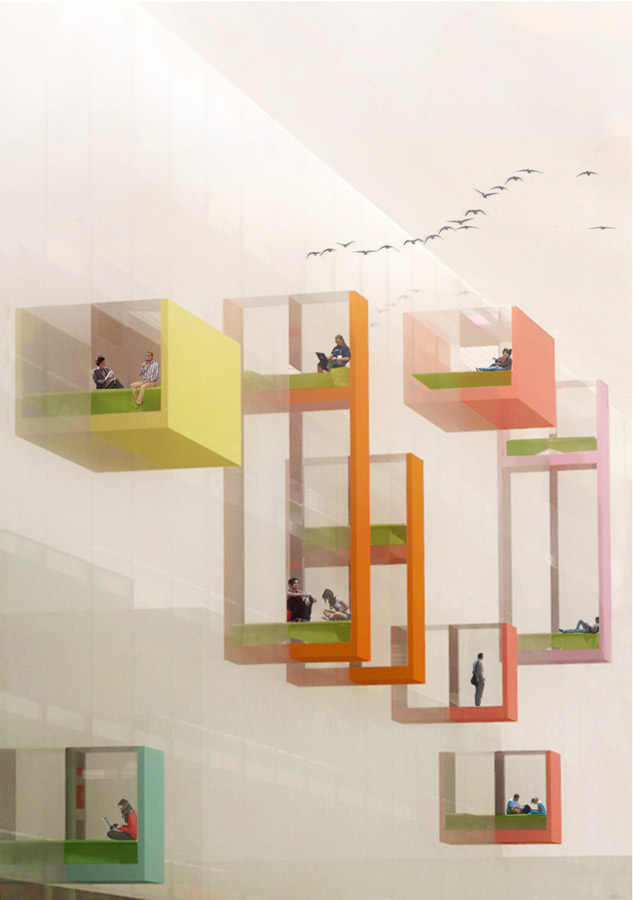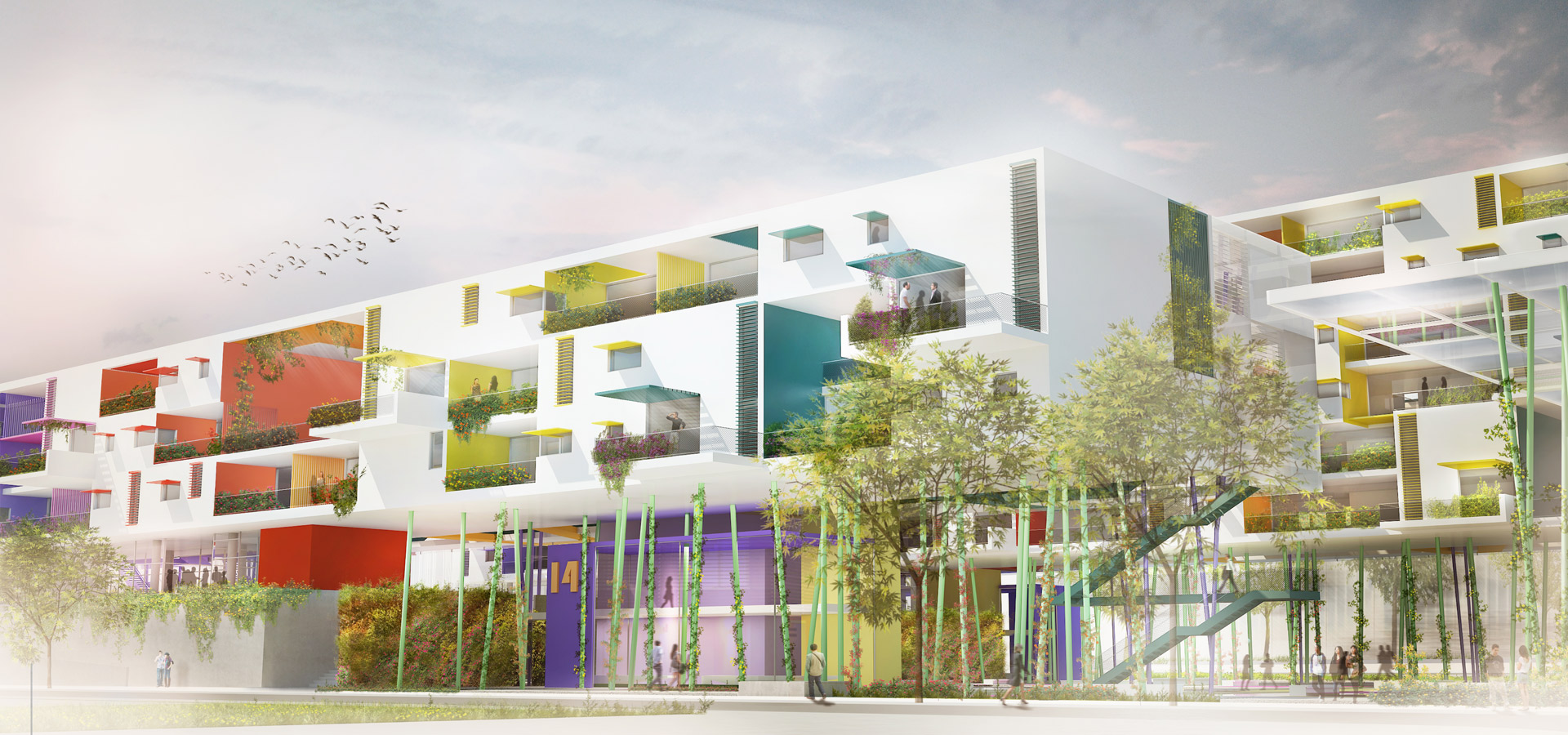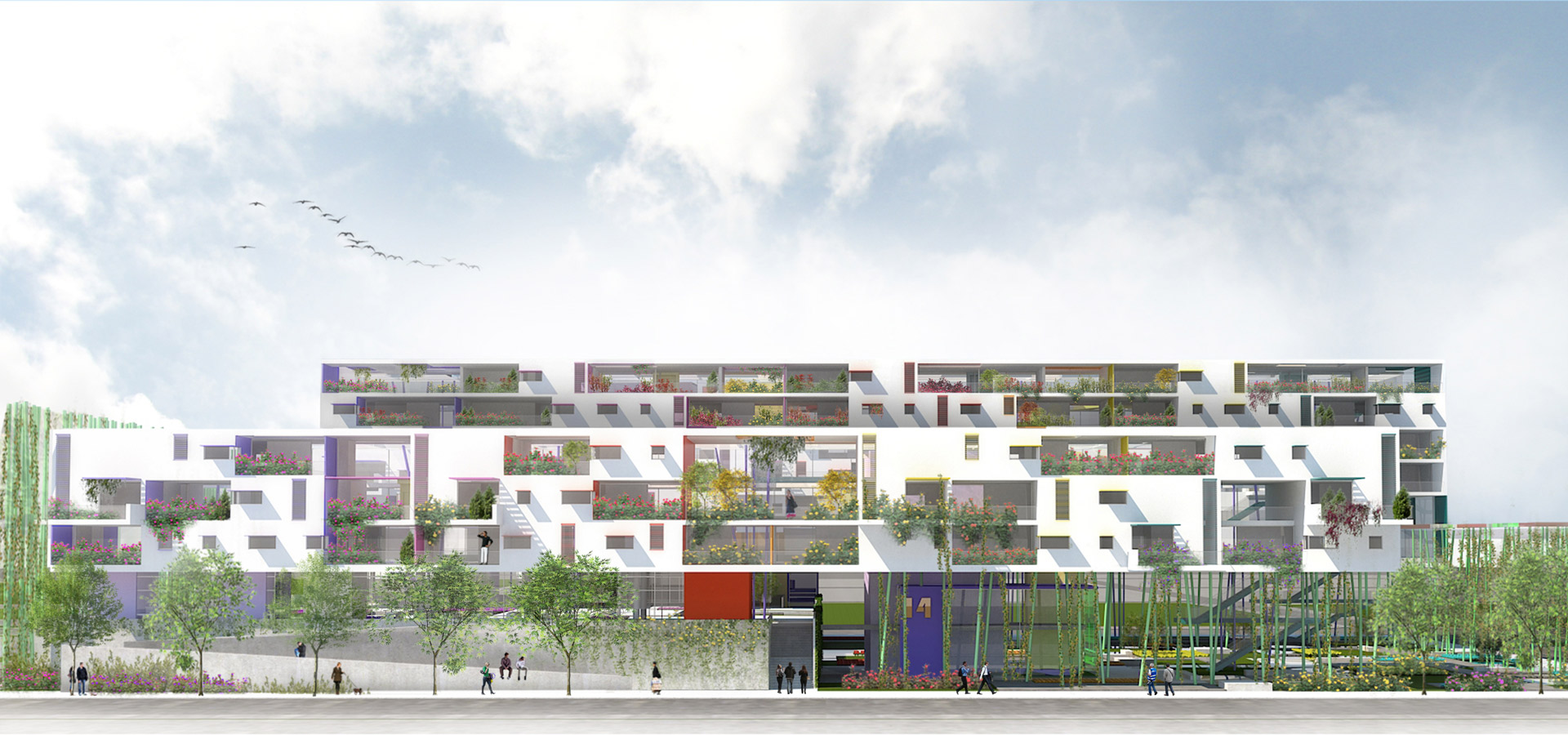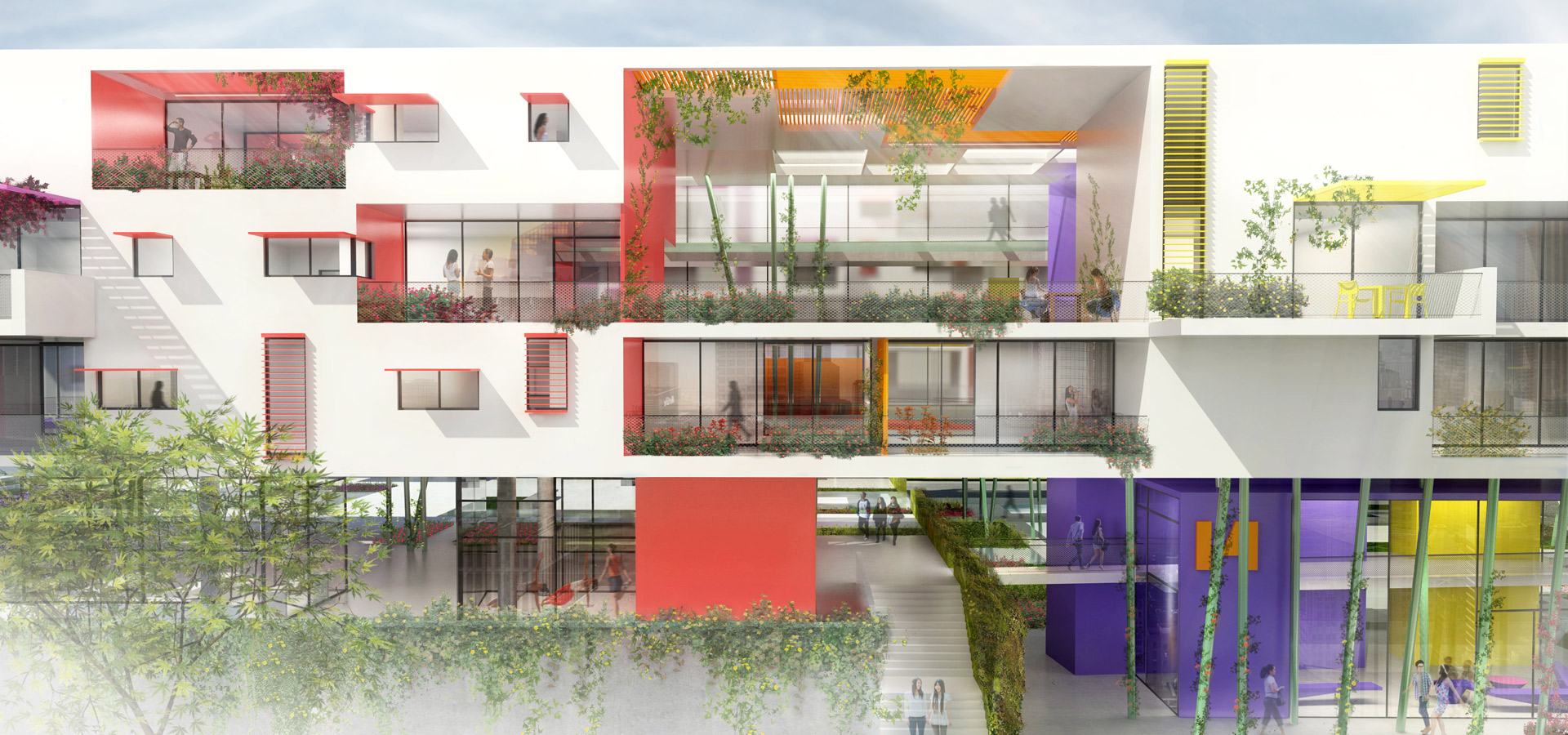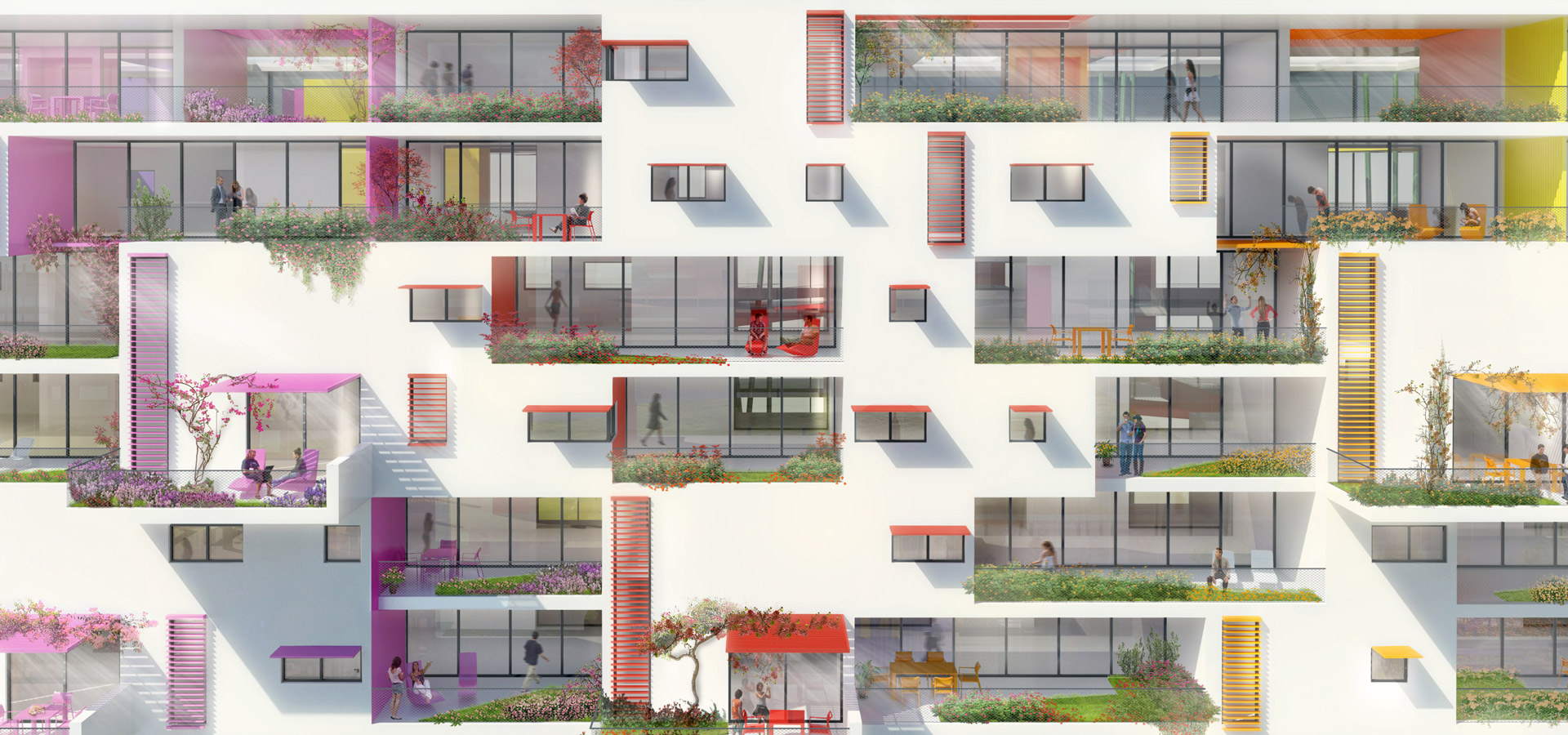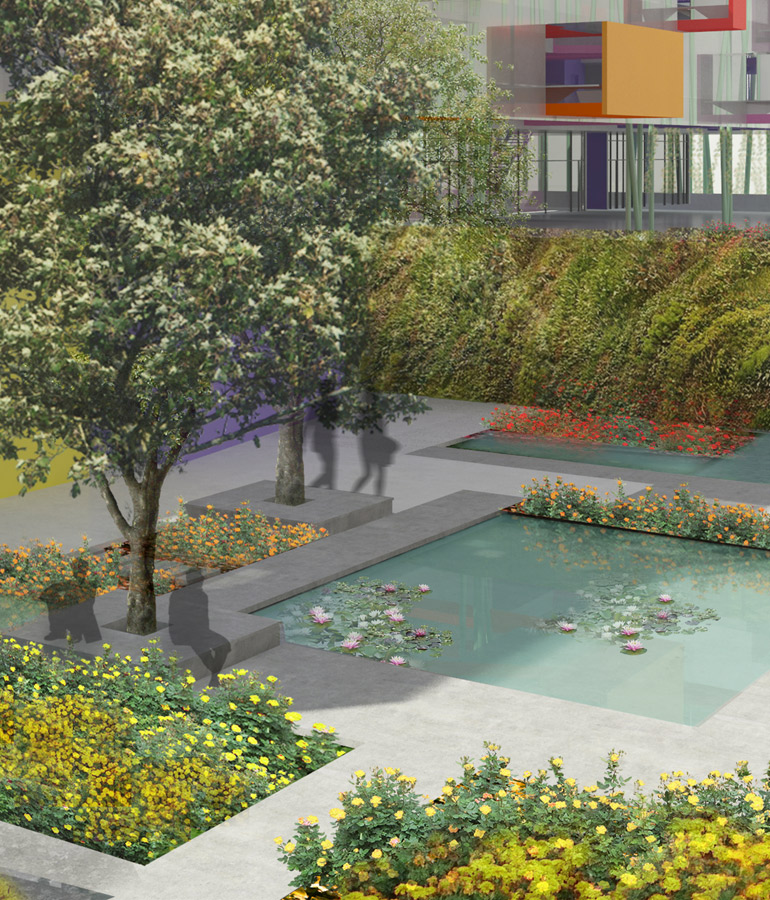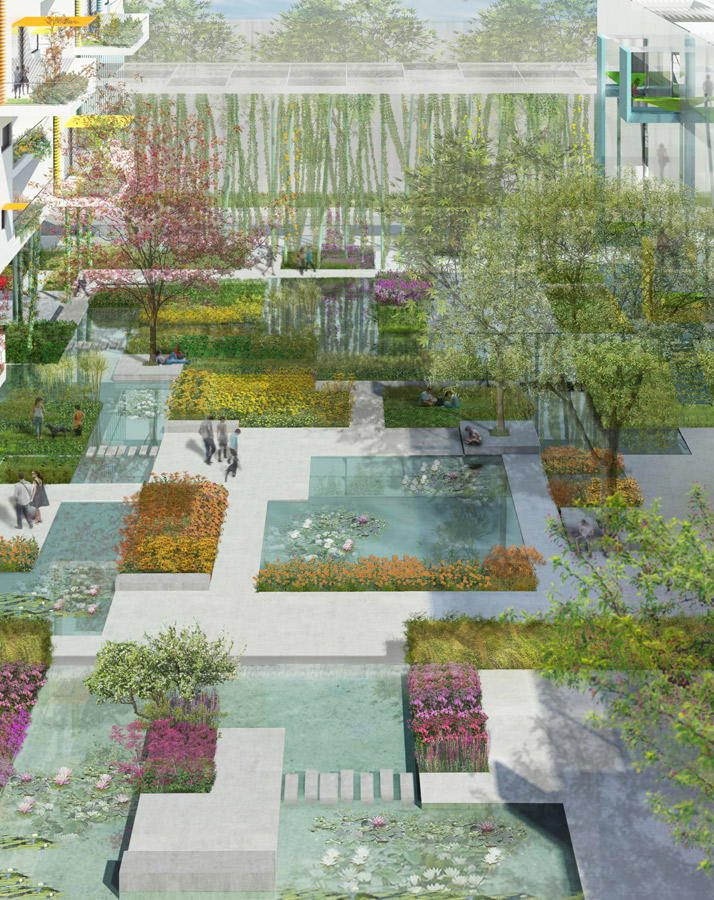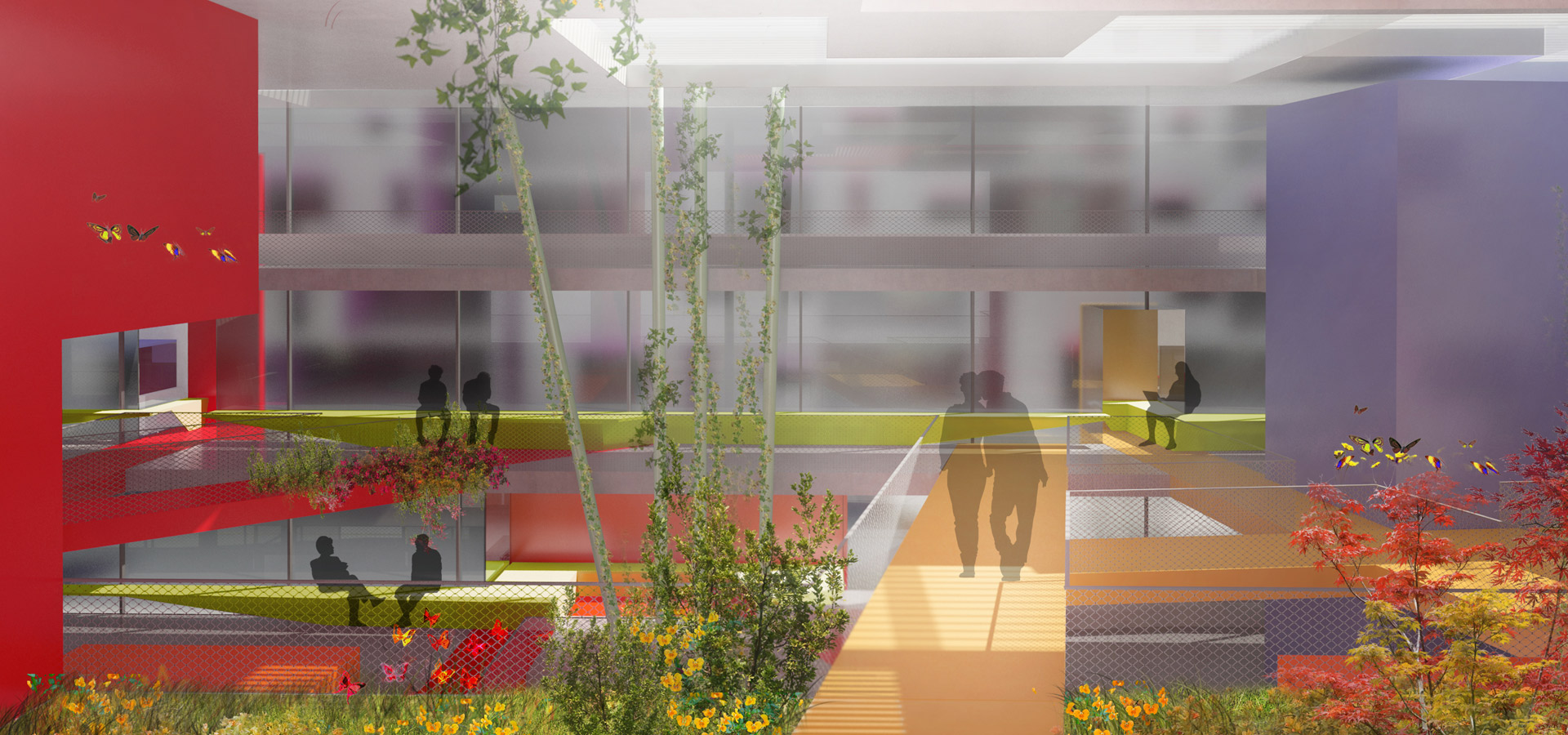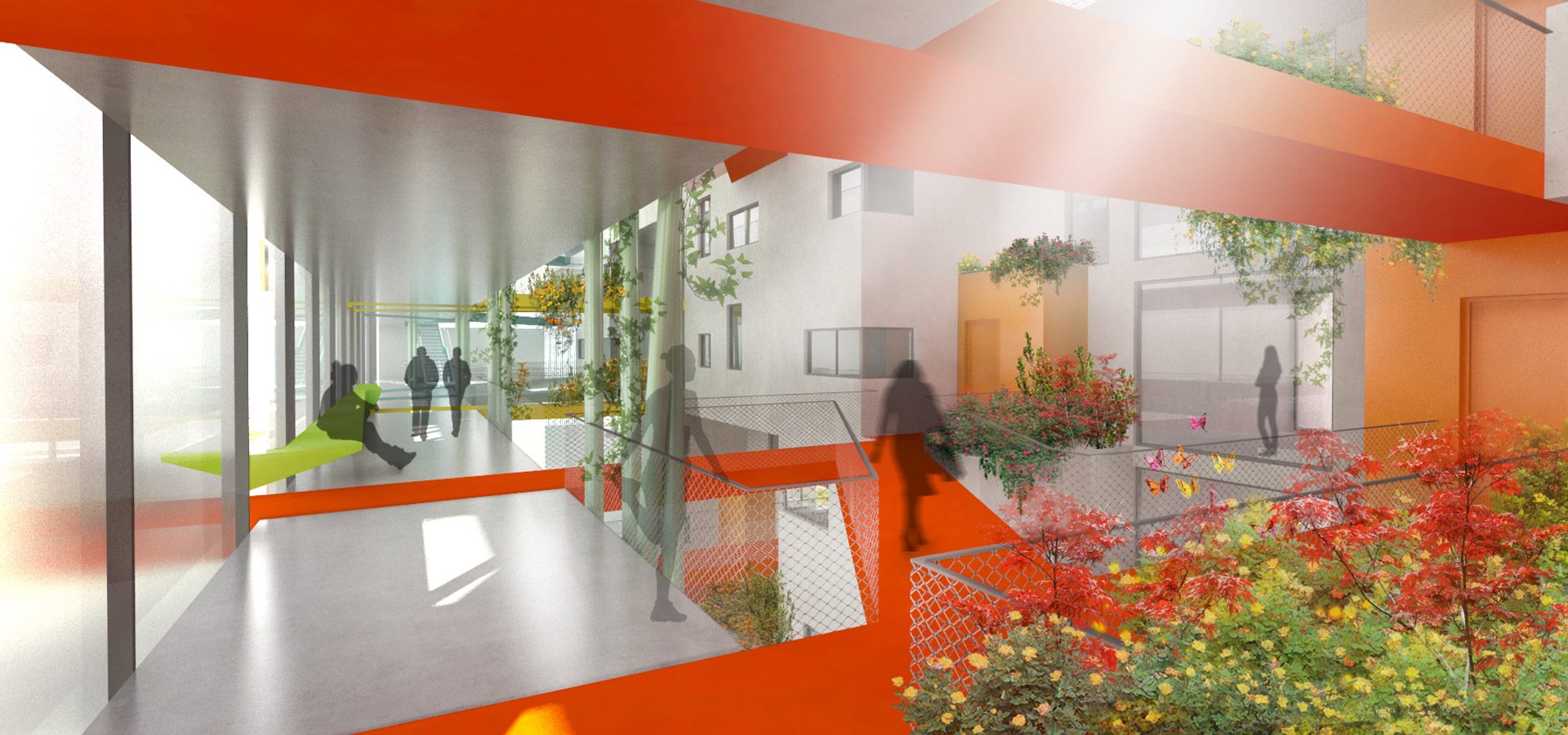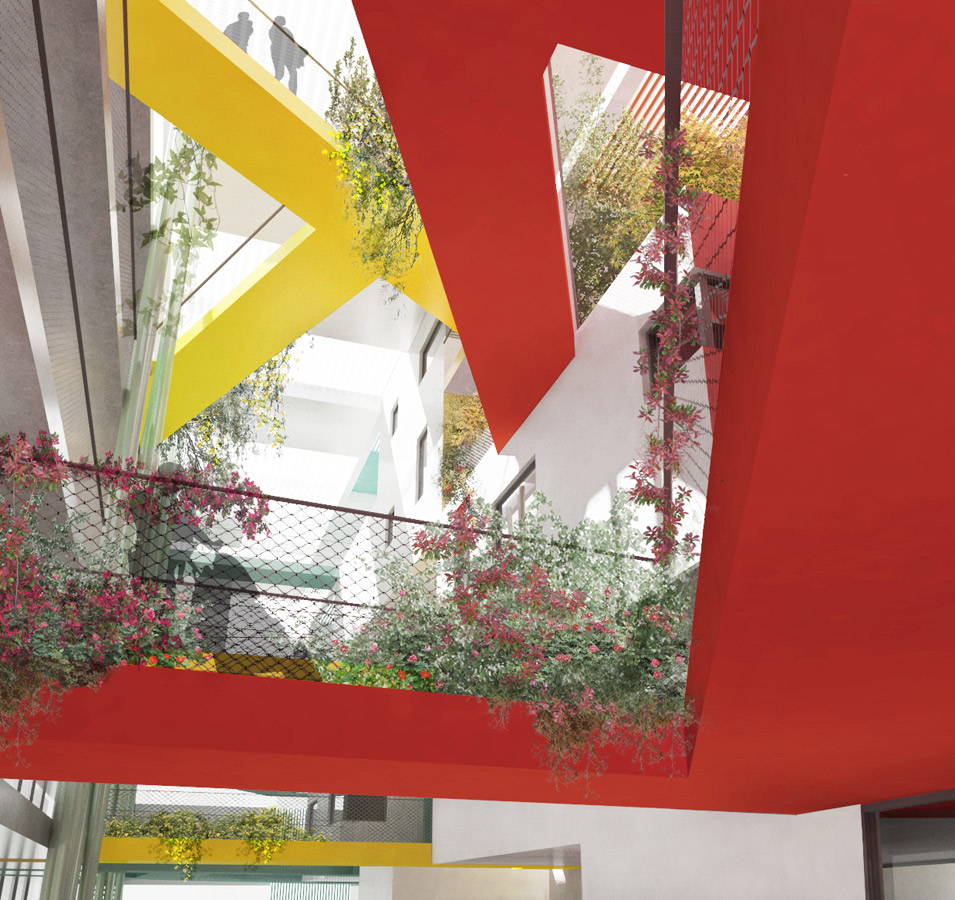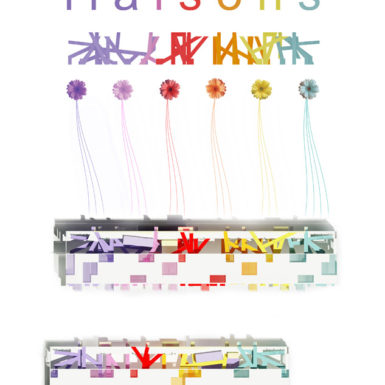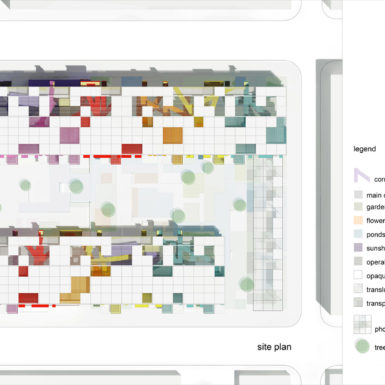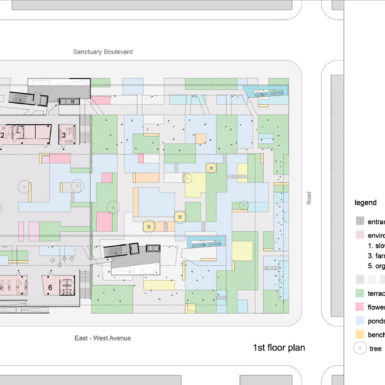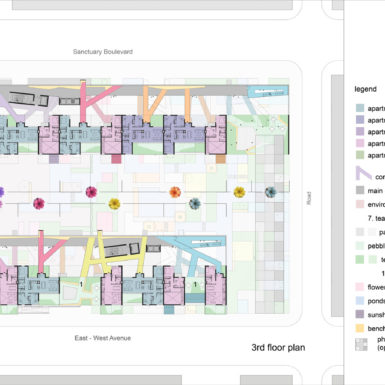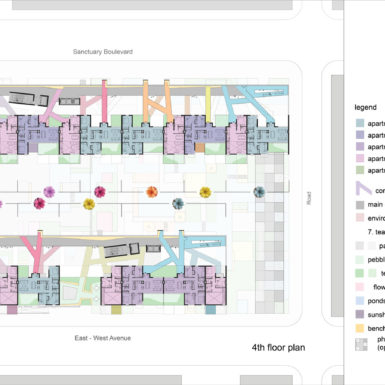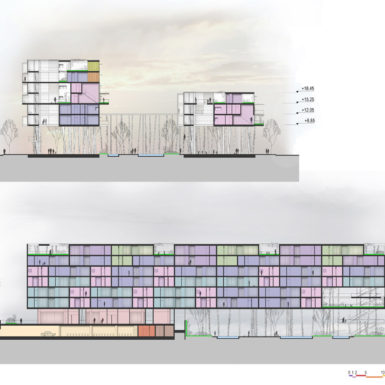location: Ruichang, Jiangxi Province, China | site area: 10.456 m2 | bua: 17.200 m2 | design: 2015 | status: competition entry
“MOLEWA” (Mount Lu of World Architecture) was an international architectural competition that tasked participants to propose designs for the “Flower Ocean / Huayan Township”, a development of a new urban district in Ruichang, China. The residential district of the new Township features close proximity to the “Flower Ocean Garden”, one of the world’s largest to be flower theme parks. The competition called for sustainable designs with concepts related to the “Flower Ocean”, which will promote cultural values and will encourage social interactions in the notion of a healthy and joyful lifestyle.
The presented entry design (housing category) embraces the cultural and climatic conditions of the territory and forms a series of strategic design principles and sustainability features that aim at functional, ecological and socially responsive living spaces. Blooming is a symbol of youth, prosperity and euphoria (happiness). Interestingly so, this connotation has international appeal.
The colorful flower gardens, widely found in the region thanks to the favorable subtropical climate, to the soil conditions and to the abundance of water, motivated the intention to introduce the flourishing essence in spatial qualities as follows:
Floral and vegetal properties are analyzed in pixels and converted in patterns to be applied directly or indirectly in grids, sequences, arrangements, structures and spatial organization principles. The project is developed in six areas which are defined by distinct flower colors (purple, pink, red, orange, yellow, qing). The areas appear with diverse materialities throughout the horizontal and vertical surfaces, for example in the circulation zones, in the landscape design, in the facades, etc. The color succession remains the same throughout the total height of the buildings, but the specific limit between the areas varies from floor to floor. The landscape as well as the semi-public terraces of the buildings are covered by beds of flowers that bloom all year round, representing each area. The circulation network, as well as the load bearing pillars, find direct reference to vegetal forms. The layout of the volumes derives from the traditional Chinese houses, which are organized around a central courtyard. Water is integrated as a principal element in the landscape design.
In terms of sustainability, in the complex active and passive design strategies are implemented as well as new technologies such as: taking advantage of the optimal South orientation, ensuring natural illumination and cross ventilation, providing efficient sun shading, utilizing geothermal energy, harvesting solar energy via photovoltaic panels thus achieving energy autonomy for the whole complex, accommodating central management of waste and recyclable materials, collecting rainwater for watering plants, ameliorating microclimatic conditions by integrating vegetation, etc.
credits
project architects: V.Daskalaki, D.Grigoriou, C.Lazou, K.Louizis, M.Kollia, T.Tozaj, A.Schoinochoriti, N.Baskozos, C.Baskozos.





